
Who Is Your Nonprofit Missing? Using Integrated Marketing to Connect With Generations X, Y, & Z
This article was written by guest blogger, Maureen Wallbeoff, vice president, Firefly Partners.
 It’s a common nonprofit communication challenge – how do I make sure that my content is resonating with my audience? All verticals, all sizes, all levels of sophistication – we all struggle with the big three:
It’s a common nonprofit communication challenge – how do I make sure that my content is resonating with my audience? All verticals, all sizes, all levels of sophistication – we all struggle with the big three:
- Best Use of Modern Communication Channels
- Supporter Conversion
- Effective Testing
In a recent session for the IMAB Integrated Marketing Virtual Conference for Nonprofits, Mark Rovner, Kerrie Goughnour, and I teamed up to review the latest data on generational giving. We also walked through a compelling case study focused on millennials, and presented some gen-specific tactics you may want to use at your organization. You can view a recording of the whole shebang here.
The Research: Blackbaud’s Next Generation of American Giving Report
Mark Rovner, Principal, Founder & CEO of Seachange Strategies, presented a thorough overview of this recent report, including a fantastic section about defining the earmarks and giving behaviors for the four most established generations. You can check out our full slide deck here and download the report here.
Here are his key takeaways:
- Generosity increases with age.
- All generations respond well to stories that illustrate the impact of their gift.
- 1 in 3 donors are members of Gen X or Gen Y.
- Your website and email are very important channels for giving across all generations.
- Direct mail is relevant as a communication tool and is the best giving channel for Matures.
- Social Media is a valid communication channel (and a very soft donations channel).
- Workplace giving and volunteer programs appeal to donors across all generations.
- Mobile/Responsive websites, email and donations are no longer optional.
Top Two Giving Channels by Generation
|
Matures |
Boomers Pledges Honor/Tribute Gifts |
|
Gen X |
Gen Y Shop to Give (Symbolic Giving) Workplace Giving |
The Case Study: Be The Match Foundation’s Be The Match On Campus Program
Kerrie Goughnour, Development Specialist, Direct Response at Be The Match (BTM), has fresh experience in outreach and conversion specifically designed for the college-age supporter. Over the past 25 years, Be The Match®, operated by the National Marrow Donor Program® (NMDP), has managed the largest and most diverse marrow registry in the world. They work every day to save lives through transplant. Their work includes efforts to increase awareness, grow the marrow registry, and raise money.
BTM has several successful programs, including Team Be The Match and Be The Match Walk/Run. In early 2013, leadership recognized that there was an opportunity to provide outreach specifically to the college-aged population. They do a lot of work on social media channels so they had some experience thinking in a multi-channel way. Leadership chose to dedicate time and money to creating a special online place for college students. Their goals for this new program included:
- Begin cultivation of college-aged supporters (start of donor relationship)
- Raise awareness of BTM work and how they can help
- Increase number of marrow donor registrants
- Test a variety of communication and engagement tactics with this population
Kerrie’s team partnered with Firefly Partners to create a fully responsive peer-to-peer website for Be The Match on Campus. This new site allows each participating campus to have its own branded web presence with communication and fundraising tools for students to get involved. The campaign launched in the fall of 2013 and is already expanding to more campuses for fall 2014. Kerrie and her team have identified these early “lessons learned” for working with the millennial population:
- They aren’t as organized as adults are – things don’t always go to plan.
- Speak in their language, use slang and humor freely.
- Gens Y & Z are fans of text messaging about news/updates.
- They want to DIY – give them many channels to use to get involved.
The Tactics: Gen-Specific Communication
Development folks often approach me with a gleam in their eye and one quick question: How can I reach my supporters most effectively? I’m here to tell you that the answer is – start with your data. Get a grasp of your current supporter mix, and create a short list of ideas using tactics that the data shows is most effective for your particular set of supporters. Mostly Matures? Keep direct mail as your main tactic (for now), and try a campaign or two designed to reach an audience that you need to grow.
Here are some quick ideas for tactics that I’d recommend you set up and test before end of year giving rolls around:
- Matures – Send them an eCard on their birthday.
- Boomers – Develop a set of attractive eCards and pair with honor/memorial donations.
- Gen X – Use images specifically for sharing on Pinterest (and link them to a donation form).
- Gen Y – Add DIY peer-to-peer fundraising for life events (weddings, births, and graduations).
- Millennials – Use gamification to get them to take action (earn badges, points and prizes).
It can feel challenging to try to wrangle a communication plan that works for each generation and uses our ever-expanding set of channels effectively. Try to feel empowered (rather than overwhelmed) by the many tools at your disposal. Keep an eye on your performance data, and approach your new attempts as just that -- attempts. You may succeed beyond your wildest dreams or you may learn what does not work with your audience. Either way, use this data to try something new in 2014, and next year you’ll have a good grasp of the best approach to get results for your particular organizational communication and fundraising goals.
Share, Like and Post | | Article Link | CommentTruths From the Dark Side: 7 Things I Learned From My NTC Audience
 At any fundraising conference, the busiest sessions always seem to have consistent traits: big picture ideas, one in a million success stories, crowd funding and social media to name a few. Less glamorous sessions deal with the dark side -- keeping it real and addressing questions around implementation like: How the heck would we implement that? Could I get buy-in from others in my organization, or will I be run out of town by leadership with pitchforks and torches? Is the ROI really there as they said, or is that widely chatted about, but a rare and isolated success story?
At any fundraising conference, the busiest sessions always seem to have consistent traits: big picture ideas, one in a million success stories, crowd funding and social media to name a few. Less glamorous sessions deal with the dark side -- keeping it real and addressing questions around implementation like: How the heck would we implement that? Could I get buy-in from others in my organization, or will I be run out of town by leadership with pitchforks and torches? Is the ROI really there as they said, or is that widely chatted about, but a rare and isolated success story?
From the less glamorous side. . .
On March 14, I co-presented at the 2014 Nonprofit Technology Conference (NTC) and the title of the session was “Tech Talk with the IMAB: Building the Tech Foundation”. The session was technology focused, and I felt that my responsibility was to present common marketing scenarios ranging from simple to more complex because my expertise is NOT technology! I also felt it necessary to build a bridge between common marketing scenarios and our discussions of any technology applications. In addition, it helped me feel more relevant and useful.
What amazed me the most about this session was the audience. I tried to get to know as many people as I could upon their way into the session to get a feel for what the audience expectations may be. To my surprise, I estimated that only 10% of the participants had a technology-focused role at their company or organization.
Most of the participants were there to learn more about technologies and their infrastructures because their current setups and team work-flows just did not work today. They were hungry for collaboration, silo busting, and solutions that worked for the organization, not just one work group. They were the quiet heroes and leaders in the organization that wished to be a part of a greater positive change. They were generalists. Their interests were wide-ranging, and they had excellent grasps of the fundamental needs of their organization and why it was important for teams and technologies to work toward that end.
Here’s what I learned from my audience as it relates to choosing and implementing new technologies:
- Be collaborative for real. Include fundraisers, campaigners, technology users and a donor advocate (donor perspective) in the collaboration process prior to seeking a technology solution. Together, define the criteria for new fundraising, campaigning, or CRM technology solutions.
- Keep inputs simple. Each group or team should define only two or three criteria – keeping it tight and simple.
- Deserving of its own number, but is a repeat from #1, include users and donor centered perspectives in all facets of the process.
- Looks fade; marry technology that will age gracefully. Choose technology solutions based on function and never by looks.
- Assumptions make an ___ out of you and me. Identify as many assumptions of stakeholders as possible and neutralize them with reality or confirm them with fact. Don’t be the ___!
- Do both a downward dog and plank yoga pose when implementing any large technology solution. Don’t fall into just one development process: agile vs. waterfall. Unanimously, the group’s sentiments were that more people are happy when using a hybrid of an agile and waterfall development approach. The waterfall methodology is a sequential design process in which when one step is completed, you move on to the next and theoretically, you never look back -- leaving no room to changes to previous steps. An agile approach is considered to be incremental instead of sequential. Agile is a set of many very small projects that have user testing, and quality assurance steps built into each. An agile approach allows you to look back and change, but theoretically the project may never end, and time and costs can creep out of scope.
- Don’t tell your COO or CFO about #6.
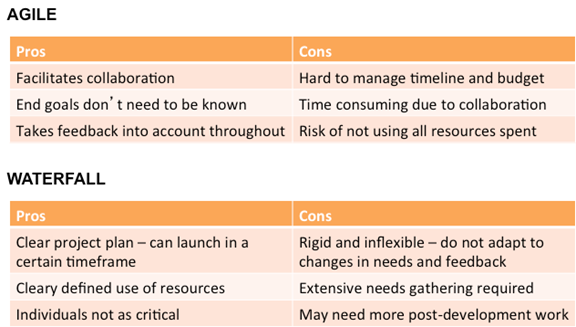
For more information, take a look at the slides from this session.
Multichannel Acquisition: Growing Your House File from Various Sources
This article was written by guest author Angela Struebing, agency director for CDR Fundraising Group.
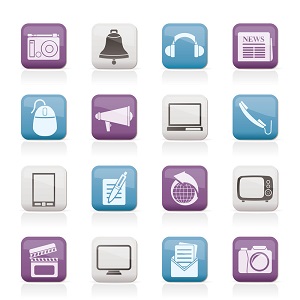 New donor acquisition is the pillar of any nonprofit. Without new donors, attrition will whittle down an organization’s file, revenue, and ability to run programs and fulfill its mission.
New donor acquisition is the pillar of any nonprofit. Without new donors, attrition will whittle down an organization’s file, revenue, and ability to run programs and fulfill its mission.
Fortunately, with new and emerging technologies, today’s fundraisers have many channels by which to acquire new donors. Which are best for you, depends on your organization’s objectives, resources, and capacity. Ultimately, a fully integrated approach utilizing multiple channels in concert is optimal.
Direct Mail
Direct mail remains the workhorse of the fundraising industry: 93 percent of fundraising dollars are still raised through traditional offline channels1— and your typical donor (female, 60+) still gives via mail. Shore up your direct mail efforts before branching out, and continue to test (creative, offers, ask strings, etc.) within your file to optimize net revenue and lower your cost to acquire a new donor.
Digital Media
Online channels expand opportunities to deliver multiple touch points to prospects.
- Emails: Send pre and post messages to bookend mail efforts. The pre email tells prospects the mail is coming and offers them an opportunity to donate online. The post email reminds them to complete the desired action if they haven’t already. If the acquisition list doesn’t contain email addresses, get them through an eAppend or a co-op that offers email addresses for multi-touch testing.
- IP Cookie Matching: Cookie targeting allows organizations to serve banner advertisements to individuals on a mail file. When coordinated with an acquisition package, it can provide the extra impression some prospects need to convert.
- Facebook Custom Audiences: Another touch point — using a platform prospects already frequent. As with cookie matching, you won’t see the contributions coming directly from these ads, but through a lift in the mail.
- SEM, Display Advertising, Homepage Lightboxes, Remarketing: These standalone efforts can generate new donors and leads. To capitalize on the leads, put full data capture processes in place such as a multi-step donation online form that collects the basic contact information on the first page and cart abandonment solutions.
- Petitions, Contests, Access Walls: These strategies focus more on lead generation. To convert petition-generated leads (advocacy-based engagement) into donors, you need a timely conversion process in place. With contests, prizes should relate closely to the organization’s mission. The looser that connection, the lower your response rate will be. With access walls, provide content that compels prospects to offer their email or mailing addresses to view.
Telemarketing
Historically, telemarketing donors have a lower conversion rate to offline donors than online donors, but telemarketing can be a great channel for reactivating lapsed donors. Thank-you calls to newly acquired donors, regardless of source, can also increase subsequent retention and revenue.
Peer to Peer
Event-based fundraising (runs, walks, rides) has exploded in popularity. While these events are typically successful in and of themselves, it can be difficult to convert the new donors they attract to repeat donors, as their relationship is usually with the participant rather than organization. Immediate follow up through social media posts, email communications, direct mail, and in some cases, calls to larger gift donors, can help convert them.
Direct Response Television
While DRTV has been around for over 30 years, it is being used by more organizations as the barriers to entry are reduced. DRTV is truly an integrated medium, since one must make a gift through another channel (online or phone). Success with DRTV can change the face of an organization, as it traditionally brings on monthly sustainers who will be around for years.
Many cookie targeting firms have started to offer cookie targeting that is coordinated with commercials. This technology allows for three distinct touch points to a prospect in three different channels: mail, online, and television.
All Together Now
Oftentimes, various channels are handled by different, siloed departments. The starting point for integration is to get all stakeholders on board. You’ll need to explain how budget and efforts in one area will influence and drive traffic or donations in another. Attribution models can help show how gifts are accounted for across channels.
With a multichannel program, databases should be synced — or on the same platform — so donor communications can reference the specific ways they’re involved and you can set an appropriate ask string.
With today’s technology, fundraising is reaching new heights. The most successful organizations still use direct mail as a base, but they’re also testing, integrating and adopting new channels.
(1) 2012 Blackbaud Charitable Giving Report
Share, Like and Post | | Article Link | CommentAnnouncing the 2014 IMAB Integrated Marketing Award Winners!
On Friday, March 14 at NTEN’s 2014 Nonprofit Technology Conference, the Integrated Marketing Advisory Board (IMAB) announced the winners of its third annual Integrated Marketing Awards. The Integrated Marketing Awards recognize nonprofit organizations showing exemplary leadership in the area of integrated marketing. We congratulate this year’s winners, who exemplify the sector’s successful use of integrated, multi-channel marketing campaigns or programs.
This year’s winners by category:
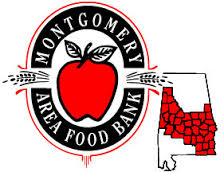 The Donor
The Donor
Montgomery Area Food Bank, won in the category of The Donor for demonstrating how an integrated marketing campaign or program had an impact on donor satisfaction and the donor experience. The organization focuses on programs as part of its marketing plan to encourage donor engagement and overall support of its programs.
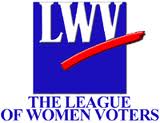 The Organization
The Organization
The League of Women Voters of the United States, a nonpartisan political organization that encourages informed and active participation in government, won in the category of The Organization, demonstrating how an effort across the organization aligned strategy, structure, culture, or skills to impact the organization’s ability to integrate its marketing efforts. The organizations created a successful broad-based marketing campaign involving all departments within the organization.
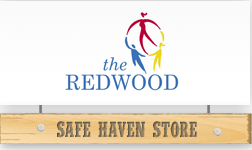 The Practice
The Practice
The Redwood, a Toronto-based shelter for women and children who have fled abusive situations, won in the category of The Practice for sharing its real world case study highlighting best practices in the field of integrated marketing. The organization used a variety of technologies and promoted its Safe Haven Store across multiple channels for stellar results.
The IMAB is privileged to honor these organizations that are demonstrating best practices in integrated marketing. We’ll feature case studies from these organizations in future posts, so stay tuned to the IMAB blog for more details!
Integrated Marketing and the Donor Lifecycle: A Real World Perspective
This article was written by guest authors Terri Burton, Associate Vice President, Membership & Annual Fund, The National WWII Museum; and Jennifer Sacks, Interactive Marketing Manager, The National WWII Museum. It is based on their session from the recent IMAB Integrated Marketing Virtual Conference for Nonprofits. View a recording of their session.
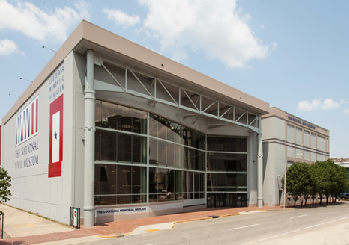 The National WWII Museum’s path to a multi-channel campaign began in 2003 with the development of a national direct mail program. In the first 5 years of the program, we grew from approximately $3 million in revenue to over $5 million by year 5. The number of donors within this same period grew to 80,000.
The National WWII Museum’s path to a multi-channel campaign began in 2003 with the development of a national direct mail program. In the first 5 years of the program, we grew from approximately $3 million in revenue to over $5 million by year 5. The number of donors within this same period grew to 80,000.
Today, the program brings in nearly $8 million in operating revenue, accounting for 23% of the Museum’s overall operating budget. It continues to be the largest targeted national outreach and marketing campaign for the Museum. From the success of direct mail, the Museum was able to build its high-dollar member program for gifts of $1,000 to $10,000, and an online audience.
When we decided to expand to the online world, we were able to start our list from member emails from our direct mail file. We started with about 25,000 emails in 2008. 96% of them were members. We began with monthly emails focusing on public programming and education. However, we soon realized we had created parallel programs, and had not taken advantage of the opportunity to merge for online fundraising and more sophisticated member/donor engagement. Both channels were working and accomplishing their respective goals so, from an institutional standpoint, there was no significant urgency to merge. To make a change, we had to do a test. We decided to do that with one of our renewal mailings.
We split our largest mail segment with email addresses, $25 donors, to see how they would respond to email fundraising. Half received the direct mail package only and the other half received the package and an email. We earned $.81 more per letter mailed, and the average gift for those with email was $1.14 higher than those who only received the letter. To put it more plainly, we earned nearly $2,000 more net revenue from the emailed group than we did from the non-emailed group.
This test allowed us to create the kind of buzz we needed to encourage integration of the channels. By 2010 we were able to bring on a dedicated staffer specifically for email communication. As our Museum has grown, our email program has grown along with it. We work hard to balance fundraising, programming and stewardship messages. We have a bi-weekly Interactive Work Team meeting with representatives from each department to help prioritize our strategic goals.
We have worked hard to integrate the two programs to ensure messaging happens on and offline as soon as a new member/constituent signs up. When an individual joins through direct mail, there is a 4-step process designed to secure a second gift within their first 30 days on the file. As soon as the record is added to the direct mail database, we’ve created business rules that allow that name to be part of a nightly email address export so the name can be added to our online database. Email communication begins immediately, but the first email solicitation does not arrive until they receive the first housefile mailing.
When an individual joins online, it is a similar track with a 3-message email welcome series beginning immediately. The name is entered into the direct mail database, and the 4-step mail welcome series begins. Email communication begins after the welcome series, and the first email solicitation is timed with the first mailing.
The two paths are a clear demonstration of how consistent messaging and reinforcing mission can benefit an organization -- particularly in the beginning of the relationship with the donor. We modified our thank you program to this structure in FY2012, and it has definitely made an impact on thank you program revenue. Last fiscal year, we had 9% growth in the percentage of new donors making a gift during this period.
The number of donors has increased, and revenue has grown by $25,000 over the past three years. Additionally, response rates with email continue to reinforce the lessons learned from our initial test. Through dual channel messaging, we see that generally those with email are more responsive in the mail, and they have a 3% higher renewal rate.
The long-term impact of our integration is probably most reflected in our Multi-Year Donor numbers. Since 2008, we have steadily grown in both number of donors and revenue from these donors. Of the $5.2 million raised in FY12, half came from multi-year donors. Beyond the donations linked to direct mail, these members are also engaged in other ways. Their messaging includes multiple initiatives like our brick program as well as online-only campaigns like #GivingTuesday.
Last year we sent over 13.6 million emails. From those, we had a 12.5% open rate, a 0.8% CTR and a 0.09% opt out rate. We earned just under $40,000 in online only fundraising. $30,443 of that came from our members. We have a nice engagement rate on email, and we think it’s because we make sure to build our list organically from members and online email signups. We don’t rent or buy email lists.
The strongest integrated campaign we’ve ever done happened this past year. Our direct mail agency approached us with the idea of a banner-cloth mailing. The concept: Members receive pieces of cloth in the mail that allow them to write special messages to veterans. The cloth pieces would then be assembled into a banner to hang at the Museum Veterans Day Weekend. The concept was an opportunity for multi-channel engagement and tie-in for online, in-person, and as an appeal that would work with our high dollar program. We featured the Banner Cloth as part of all of our social media for Veterans Day by posting close ups of the squares to help highlight the message. We collected email addresses from the Oshkosh Airshow. These people received a special welcome series once added to our list, and also a follow up email following Veterans Day that featured pictures of the banner. We mailed 126,000 pieces and received 4,000 pieces of cloth. We also added 166 new emails to our list. In addition to the cloths, we received 4,737 gifts for a total of $154,989. At the end, we sent a thank you with the image of the banner to everyone who participated.
The banner cloth scenario is an example of how we have evolved to approach every project with a multi-channel vision for execution. This reaps long and short term benefits. If messaging goes back to mission and the original case for support, they will remain engaged.
Share, Like and Post | | Article Link | Comment

















